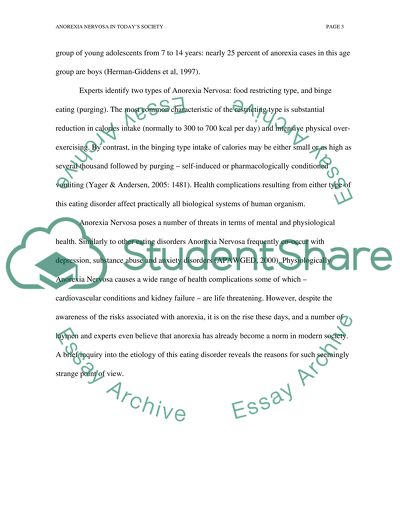Cite this document
(“Anorexia Nervosa in Today's Society Essay Example | Topics and Well Written Essays - 2250 words”, n.d.)
Anorexia Nervosa in Today's Society Essay Example | Topics and Well Written Essays - 2250 words. Retrieved from https://studentshare.org/miscellaneous/1528162-anorexia-nervosa-in-todays-society
Anorexia Nervosa in Today's Society Essay Example | Topics and Well Written Essays - 2250 words. Retrieved from https://studentshare.org/miscellaneous/1528162-anorexia-nervosa-in-todays-society
(Anorexia Nervosa in Today'S Society Essay Example | Topics and Well Written Essays - 2250 Words)
Anorexia Nervosa in Today'S Society Essay Example | Topics and Well Written Essays - 2250 Words. https://studentshare.org/miscellaneous/1528162-anorexia-nervosa-in-todays-society.
Anorexia Nervosa in Today'S Society Essay Example | Topics and Well Written Essays - 2250 Words. https://studentshare.org/miscellaneous/1528162-anorexia-nervosa-in-todays-society.
“Anorexia Nervosa in Today'S Society Essay Example | Topics and Well Written Essays - 2250 Words”, n.d. https://studentshare.org/miscellaneous/1528162-anorexia-nervosa-in-todays-society.


